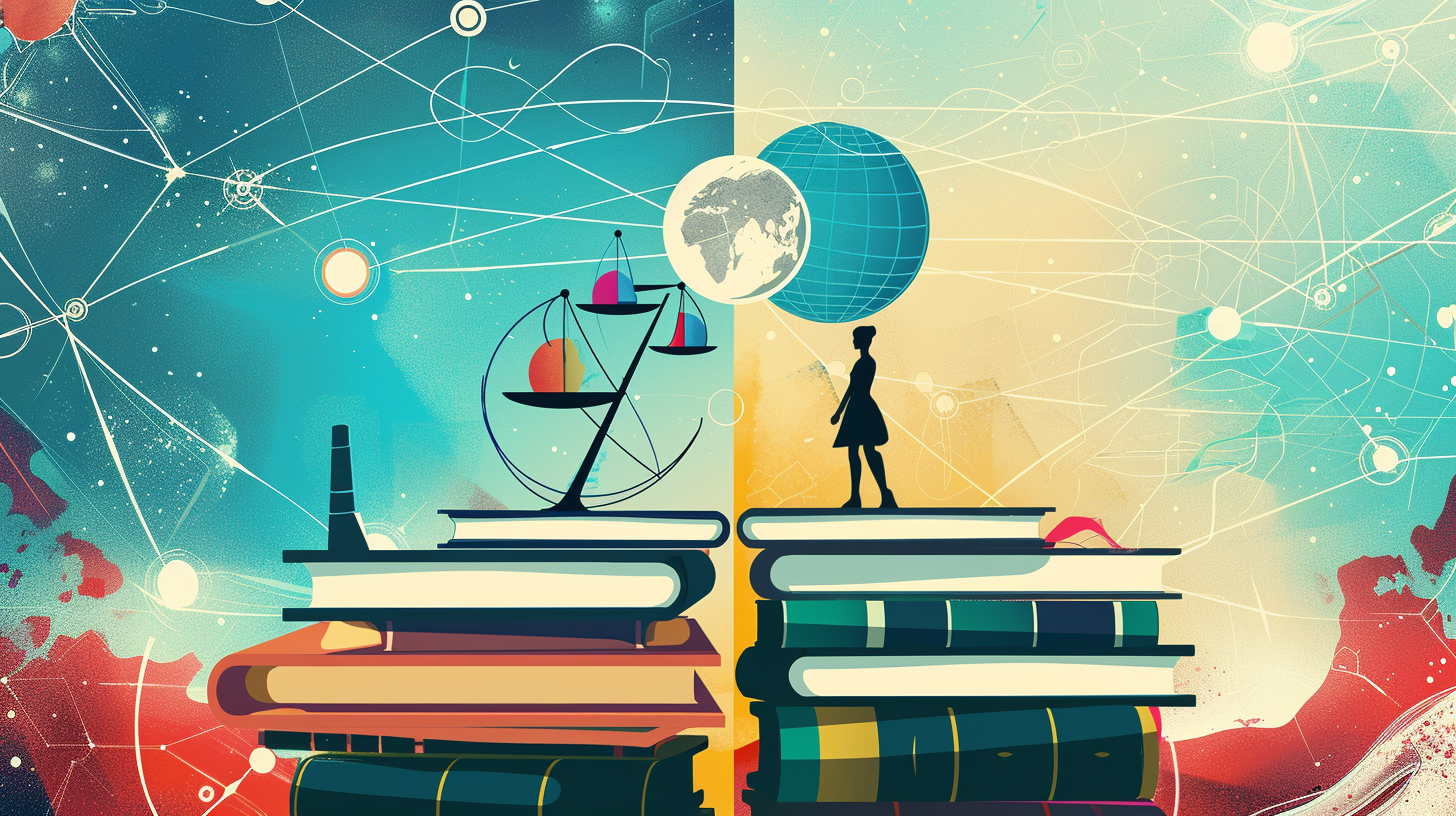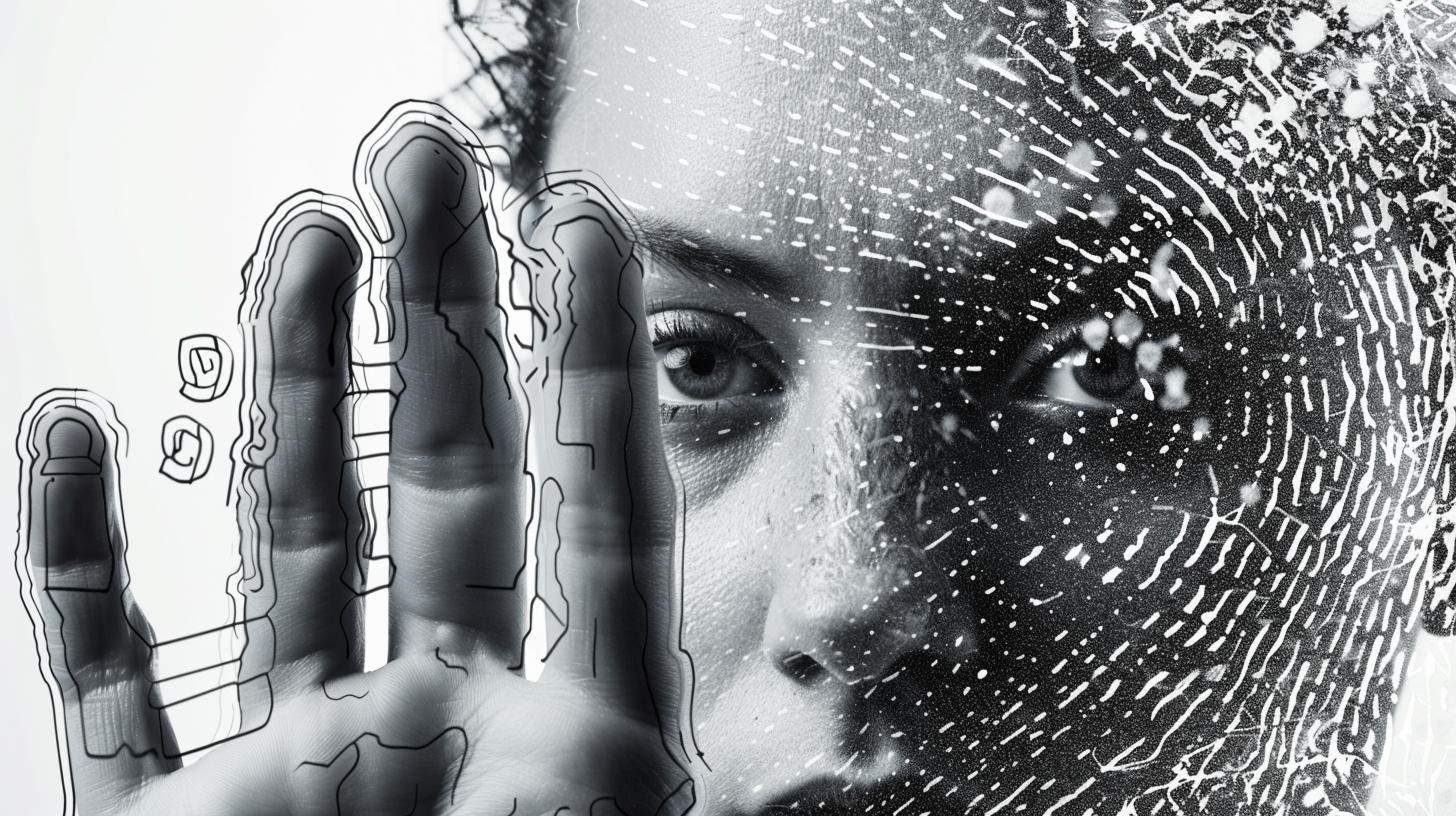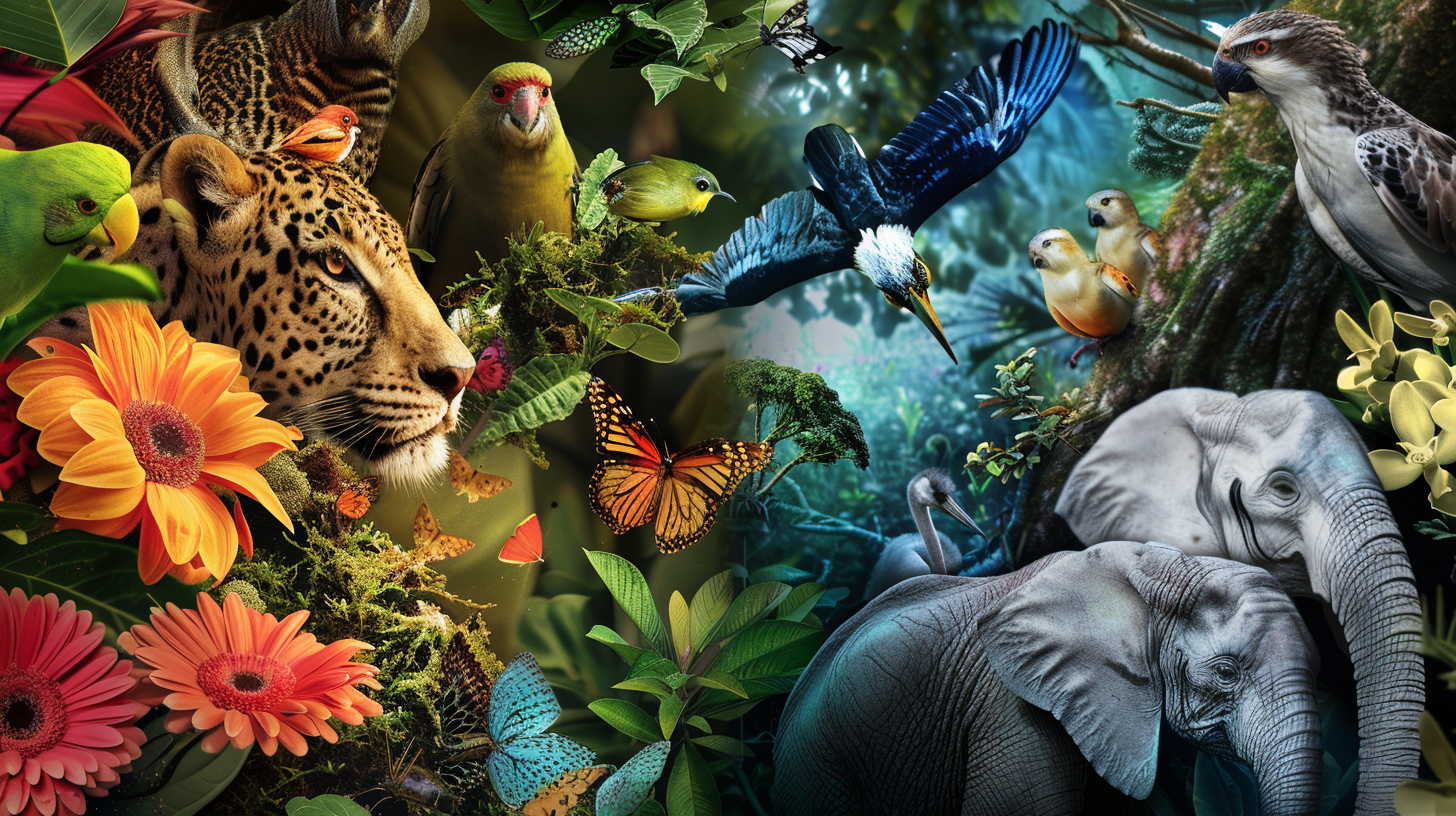Table of Contents Show
While some argue that emphasizing STEM subjects at the expense of the humanities may better prepare students for future careers, we believe finding a balance is essential. We’re all too aware of the rapid technological advancements shaping our world, yet it’s the insights from history, literature, and philosophy that often provide the ethical grounding and creative problem-solving skills needed alongside scientific knowledge. As we explore the dichotomy between STEM and the humanities, we’ll uncover not only the historical perspectives and current trends but also the tangible benefits of integrating both disciplines. Join us as we navigate the intricate path toward a more holistic educational approach.
Key Takeaways
- Both STEM and humanities are crucial for a well-rounded education, fostering innovation and ethical understanding.
- Integrating STEM with humanities in the curriculum enhances critical thinking and empathy.
- Historical shifts in education highlight the importance of balancing practical skills with cultural and ethical awareness.
- Future education strategies should focus on interdisciplinary courses to prepare students for global challenges.
The STEM Imperative
In today’s rapidly evolving world, we can’t ignore the critical role that STEM fields play in driving innovation and progress. These disciplines are at the forefront of solving the most complex challenges we face, from climate change to healthcare crises. As we push the boundaries of what’s possible, we’re not just unleashing new technologies; we’re also paving the way for a future where freedom and innovation go hand in hand.
We’re witnessing an unprecedented demand for STEM professionals. This demand isn’t just about filling job vacancies; it’s about fostering a mindset geared towards problem-solving, critical thinking, and creativity. By prioritizing STEM education, we’re equipping ourselves with the tools necessary to navigate and shape the future. It’s not just about securing our economic prosperity; it’s about ensuring our ability to adapt and thrive in an ever-changing world.
The pursuit of STEM knowledge empowers us. It offers us the freedom to explore, to question, and to innovate. This isn’t just about personal growth; it’s about collectively pushing the boundaries of human knowledge and capability. We’re not just passive observers of the future; we’re active participants in its creation.
As we advocate for a stronger emphasis on STEM, we’re not diminishing the value of other fields. Instead, we’re acknowledging that in the fabric of modern education, STEM threads are essential. They weave together the promise of a future where we’re not just surviving but thriving. Through STEM, we’re furthermore unlocking the doors to a world of endless possibilities, where our potential is limited only by our imagination.
Valuing the Humanities
While the STEM fields are unquestionably important, we shouldn’t overlook the profound impact that the humanities have on our understanding of the world and each other. The humanities, encompassing literature, history, philosophy, and the arts, offer us a mirror to see our past, present, and future from multiple perspectives. They teach us empathy, critical thinking, and the ability to question and understand the complex nature of human society.
In our pursuit of technological and scientific advancement, it’s essential we don’t lose sight of what makes us human. The humanities provide us with the tools to navigate the ethical dilemmas and social challenges that come with rapid innovation. They remind us that progress isn’t just about how fast we can move forward but also about understanding the implications of our actions on society and culture.
Here’s a breakdown of why the humanities matter:
| Humanities Skill | Benefit |
|---|---|
| Critical Thinking | Fosters the ability to analyze and question, leading to innovative solutions. |
| Empathy | Enhances our understanding of diverse human experiences, promoting tolerance. |
| Ethical Reasoning | Guides us in making decisions that consider the greater good. |
| Communication | Improves our ability to express ideas clearly and persuasively. |
| Cultural Awareness | Prepares us to navigate a globalized world with sensitivity and insight. |
Historical Perspectives
We’ve observed how the humanities enrich our understanding of the world, but it’s important to explore their historical context to grasp their full significance. From ancient philosophies that shaped the foundations of learning to the Industrial Revolution, which pivoted education towards practical skills, and into the evolution of curricula in the twentieth century, we’ll see how these shifts have influenced the balance between STEM and the humanities. This journey through time highlights the dynamic interplay between these fields and their impact on modern education.
Ancient Philosophies on Learning
Ancient philosophers, from Plato to Confucius, laid the foundational stones for modern educational philosophies with their diverse views on learning. They believed in fostering an environment where questioning and critical thinking were at the heart of acquiring knowledge. We find their emphasis on dialogue, ethics, and moral education incredibly relevant today, as they championed the idea that education isn’t just about accumulating facts but about shaping one’s character and understanding of the world.
These sages advocated for a balanced education, where the arts and sciences are equally valued, reminding us that true wisdom lies in recognizing the importance of both. Their teachings inspire us to seek a holistic approach to education, where we’re encouraged to explore freely, develop a broad perspective, and cultivate a deep respect for all disciplines. This ancient wisdom is a beacon for those of us aiming for freedom in learning, urging us to embrace a diverse and inclusive educational model.
Industrial Revolution’s Education Shift
During the Industrial Revolution, education underwent a significant transformation as the demand for skilled laborers influenced curricular priorities. This era reshaped not just the landscape of industries but how we approached learning, guiding us towards a future we’re still navigating. We felt the ripples of change as:
- Traditional crafts fell into the shadows of mechanized production.
- Classrooms shifted focus from broad knowledge to specialized skills.
- The value of hands-on experience soared above classical studies.
- A new thirst for innovation and practical knowledge emerged, urging us to break free from the confines of outdated practices.
We’re reminded that the quest for freedom in education isn’t just about breaking chains but forging new links that connect us to our industrious past while steering towards a liberated future.
Twentieth Century Curriculum Evolution
In the twentieth century, the curriculum underwent a profound transformation, mirroring the seismic shifts in society and technology. We saw education stretch and bend to accommodate new ideas and breakthroughs. It wasn’t just about reading, writing, and arithmetic anymore; it was about understanding a world that was rapidly evolving. We embraced the rise of STEM fields, realizing the importance of science, technology, engineering, and math in shaping our future. Yet, we didn’t let go of the humanities. Instead, we began to seek a balance, understanding that to truly thrive, we needed both the analytical and the creative, the factual and the abstract. This era set the stage for a more holistic approach to education, one where we’re not just learners, but explorers seeking freedom in knowledge.
Current Educational Trends
We’re now turning our attention to the shifts we’re seeing in modern education, particularly in how curricula are evolving and the rise of digital learning. These changes reflect a broader transformation in what’s prioritized in classrooms across the globe. Let’s explore how these trends are shaping the balance between STEM and the humanities.
Evolving Curriculum Priorities
How have evolving curriculum priorities shaped current educational trends, especially in the balance between STEM and humanities? We’re witnessing a transformation that navigates us towards a more holistic education, ensuring students aren’t just book-smart but life-ready. Here’s what’s stirring emotions:
- Freedom of Choice: Students can now tailor their learning paths, blending STEM with humanities to ignite their true passions.
- Critical Thinking Emphasis: There’s a push for skills that machines can’t replicate, celebrating human creativity and empathy.
- Interdisciplinary Approach: We’re breaking down silos, encouraging a fusion of knowledge that mirrors real-world complexities.
- Global Perspectives: It’s about understanding diverse cultures and global challenges, preparing students for a connected world.
These trends signal a liberating shift towards a balanced education that values all disciplines equally, empowering students to navigate their future with confidence.
Digital Learning Growth
Amidst the rapid evolution of technology, digital learning has become a cornerstone of modern education, profoundly shaping how we access and engage with knowledge. It’s not just a trend; it’s a revolution that offers us the freedom to learn at our own pace, in our preferred environment. We’re no longer confined to traditional classrooms or limited by geographical boundaries. Through online courses, virtual labs, and digital libraries, we’ve opened up an unprecedented level of accessibility and flexibility in education. This shift not only complements our lifestyles but also democratizes learning, making it possible for anyone with internet access to educate themselves on a global scale. We’re witnessing a transformative era where the thirst for knowledge meets the limitless potential of digital learning.
The Integration Challenge
Bridging the gap between STEM and humanities presents a challenging challenge in today’s educational landscape. We’re faced with the task of integrating disparate fields of study that, at first glance, seem worlds apart. The pursuit of knowledge and understanding shouldn’t be a restrictive journey but a liberating experience, allowing students the freedom to explore and innovate without being bound by traditional disciplinary boundaries.
Achieving this integration isn’t just about curriculum changes; it’s about fostering an environment where freedom of thought and interdisciplinary exploration are not just encouraged but celebrated. Here, we outline the emotional hurdles we must overcome:
-
Fear of the Unknown: Venturing into uncharted educational territory can be challenging for both educators and students. The fear of failure or not meeting traditional standards of success can stifle innovation and creativity.
-
Resistance to Change: Many of us cling to the comfort of familiar structures and ideas. Embracing a new approach requires letting go of preconceived notions about what education should look like.
-
Sense of Overwhelm: The vastness of knowledge available can make the task of integrating STEM and humanities feel insurmountable, leading to feelings of anxiety and helplessness.
-
Loss of Identity: There’s a concern that in blending disciplines, we might dilute the essence of each, losing the unique perspectives and methodologies that make them valuable.
We’re at a crossroads where we must decide whether we cling to the past or embrace the freedom to explore new horizons in education. The challenge is significant, but so are the rewards for those willing to venture beyond the traditional boundaries.
Benefits of a Blended Approach
Despite the challenges outlined, the blended approach of integrating STEM and humanities offers numerous advantages for a holistic educational experience. We’re stepping into an era where the boundaries between disciplines are blurring, creating a fertile ground for innovation and creativity. By merging the analytical strengths of STEM with the critical thinking and empathy fostered by the humanities, we’re equipping students with a well-rounded skill set that’s imperative in today’s complex world.
This approach doesn’t just enhance academic proficiency; it cultivates a sense of freedom and adaptability. We’re no longer boxing students into rigid categories of ‘scientist’ or ‘artist’. Instead, we’re fostering versatile individuals who can navigate diverse fields, communicate effectively, and solve problems with a blend of logic and creativity. This versatility is vital in a rapidly changing job market where the ability to think outside the box is often what sets one apart.
Combining STEM and humanities encourages a deeper understanding and appreciation of both fields. It breaks down the stereotype that these areas are mutually exclusive, highlighting instead how they complement and enrich each other. This not only broadens students’ horizons but also promotes a culture of lifelong learning and curiosity.
Essentially, we’re preparing students not just for the workforce, but for a fulfilling life. By embracing the strengths of both STEM and humanities, we’re nurturing well-rounded individuals who value freedom, creativity, and the pursuit of knowledge across all disciplines. This approach is our best bet in cultivating a generation that’s truly prepared to tackle the challenges of the future.
Real-World Applications
How do we see the integration of STEM and humanities playing out in real-world scenarios? It’s unfolding all around us, shaping a world where innovation meets empathy, where technology goes hand in hand with ethical considerations, and where complex problems are solved not just with data, but with an understanding of human culture and values. This blend isn’t just theoretical; it’s highly practical and increasingly demanded across various sectors.
Consider these real-world applications:
- Healthcare Innovations: We’re developing technologies that not only cure diseases but also consider the patient’s holistic well-being, integrating psychological understanding with medical treatment.
- Sustainable Engineering: Engineers are crafting solutions to climate change by combining technical know-how with insights from social sciences, ensuring technologies are both effective and socially responsible.
- Artificial Intelligence: AI developers are embedding ethical guidelines into their algorithms, a task that requires a deep understanding of both coding and human values.
- Global Education: Educational platforms are using data analytics to tailor learning experiences, incorporating cultural studies to make education more inclusive and accessible.
These examples underscore the transformative power of marrying STEM with humanities in our quest for freedom to innovate, freedom to solve problems thoroughly, and freedom to impact the world positively. By embracing this integration, we’re not just preparing for the jobs of the future; we’re ensuring that these jobs are meaningful, inclusive, and geared towards improving our collective human experience. Let’s champion a balanced education as the cornerstone of a future where freedom, innovation, and compassion converge.
Policy and Curriculum Changes
To fully realize the potential of integrating STEM and humanities, we must advocate for and implement significant changes in both policy and curriculum. It’s high time we overhaul traditional systems that have long kept these disciplines in separate silos, limiting the freedom of students to explore and connect diverse fields of knowledge. We’re pushing for policies that promote interdisciplinary studies, ensuring that students have the freedom to tailor their education according to their interests and the demands of the modern world.
We’re calling for curriculum reforms that weave humanities into STEM programs and vice versa. Imagine a science class where ethical implications of technological advancements are discussed, or a literature class that explores the narrative structures of scientific discoveries. This isn’t just about adding a few elective courses; it’s about a fundamental rethinking of how we structure education. Such changes demand flexibility in educational standards and the removal of rigid prerequisites that block students from branching out.
Additionally, we’re advocating for assessment methods that value creative thinking and problem-solving across disciplines. Traditional testing often fails to capture the full spectrum of a student’s abilities, particularly their capacity to think critically and make connections between seemingly disparate subjects.
To make these changes a reality, we need support at all levels – from policymakers to educators and parents. We’re not just fighting for a more integrated curriculum; we’re fighting for the freedom to learn, explore, and innovate. Let’s break down the barriers and build a more interconnected and flexible education system that prepares students for the complexities of the modern world.
Future Directions
Looking ahead, we must identify and pursue innovative strategies to seamlessly integrate STEM and humanities in education. This integration is not just a necessity but a pathway to release the true potential of our next generation. We’re at a pivotal moment where the blending of these disciplines can lead to a more holistic, adaptable, and innovative society.
To move forward, let’s consider these steps:
-
Create Interdisciplinary Courses: We’ll design courses that don’t just sit at the intersection of STEM and humanities but actively blend their methodologies and perspectives. Imagine a class exploring the ethics of artificial intelligence, combining philosophy with computer science, igniting students’ passion for both fields.
-
Promote Collaborative Projects: We’ll encourage projects that require both technical skills and humanistic understanding, fostering a sense of accomplishment and a deeper appreciation for diverse perspectives.
-
Implement Flexible Curriculum Structures: We’ll build curriculums that allow students to explore their interests freely, breaking the chains of rigid educational tracks. This freedom will empower them to discover and pursue their passions, blending STEM and humanities in ways we’ve yet to imagine.
-
Support Teacher Innovation: We’ll provide resources and support for educators to experiment with interdisciplinary teaching methods, acknowledging their role as the architects of our future.
In embracing these strategies, we’re not just adapting to the changing landscape of education; we’re actively shaping it. We’re offering our students the freedom to explore, innovate, and ultimately, to find their own balance between STEM and humanities. This isn’t just education; it’s liberation.
Conclusion
As we stand at the crossroads of education, it’s clear that weaving STEM and the humanities together creates a tapestry more vibrant and resilient than either strand alone. By harmonizing these fields, we’re not just preparing students for the jobs of tomorrow but nurturing well-rounded individuals capable of critical thought and innovation. Let’s embrace this blended approach, for in the union of these diverse threads lies the strength and versatility needed to tackle the challenges of an ever-evolving world.








